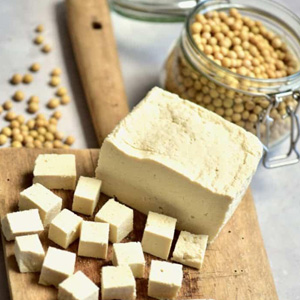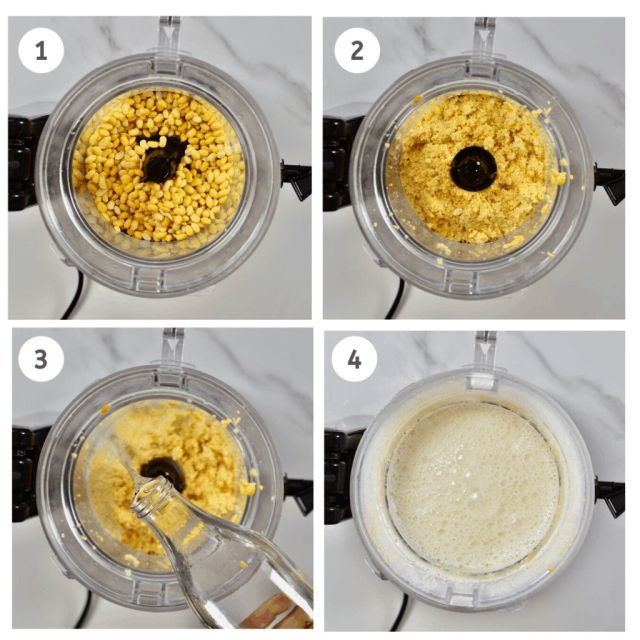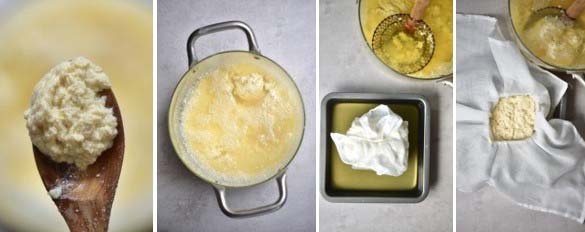|
*Servings 2 blocks of tofu INGREDIENTS
TOOLS
|
 |
INSTRUCTIONS
Method 1- The Gypsum Method:
|
 |

When you want to cook it – Once you’ve drained the tofu then you can blot it with paper towels, press it to get out any excess water before cooking as you please.
METHOD 2 – with Lemon juice:
Having soaked your beans and made the milk, as mentioned above, it’s time to continue with the lemon juice tofu method:
- Transfer the mixture into a large pot and bring to a soft boil over low-medium heat. Stir occasionally and remove the foam ‘skin’ that forms on the top with a wooden spoon.
- In the meantime, juice the lemons. As soon as the milk starts boiling, add the lemon juice and remove from the heat.
- Stir carefully a few times then set aside. Curdles will start forming.
- If no curdles are forming, turn the heat on for a couple of minutes and add a few more drops of lemon juice.
- Once the bowl is filled with curdles ( this can take different times each time- so it’s hard to pinpoint) then put a muslin cloth over a mould and transfer the milk curdles with a skimmer spoon. Wrap the cloth tightly around the milk curdles.
- Put a heavy object oven the cloth, to press it. This will allow the tofu to form and harden and get rid of excess liquid.
- Within 20 minutes, your firm tofu is ready. If you’d like it to be softer then check after 5-10 minutes and continue to press, as needed.

This lemon tofu can be stored the same way as the above method – Kept in an airtight container in the fridge for 3-4 days. And remember, fofu dries out quickly so it’s best to keep is stored in filtered water. You can then press the tofu, as needed, before cooking.
A few notes about tofu:
We thought we´d answear a few of what we think are the top FAQ´s for tofu here:
- Firstly, yes it can be eaten raw. There isn’t much flavour to it at this point but it’s perfectly edible
- Yes, tofu can also be frozen – for 4-5 months. Freezing does change the texture of tofu – however, it’s often seen as a good thing. If you freeze and thaw your tofu before cooking it, it will make it more ‘pocket-y’ and retain more flavour, becoming crispier crispy tofu when fried, but also has a chewier – more ‘meaty’ texture than if not frozen.
- It is possible to flavour your tofu at home but I haven’t tried this yet, as I usually add mine to sauces and high-flavour dishes anyway. However, it’s possible to flavour in a way similar to cheese – with herbs spices and ‘sundries’ like olives and sundried tomatoes. Just be careful not to add too much so the curds don’t solidify together.
- what does tofu taste like is a question I feel like all newbies struggle to find an answer to because the answer is – not much! I love this though, as it allows you to mould it to
